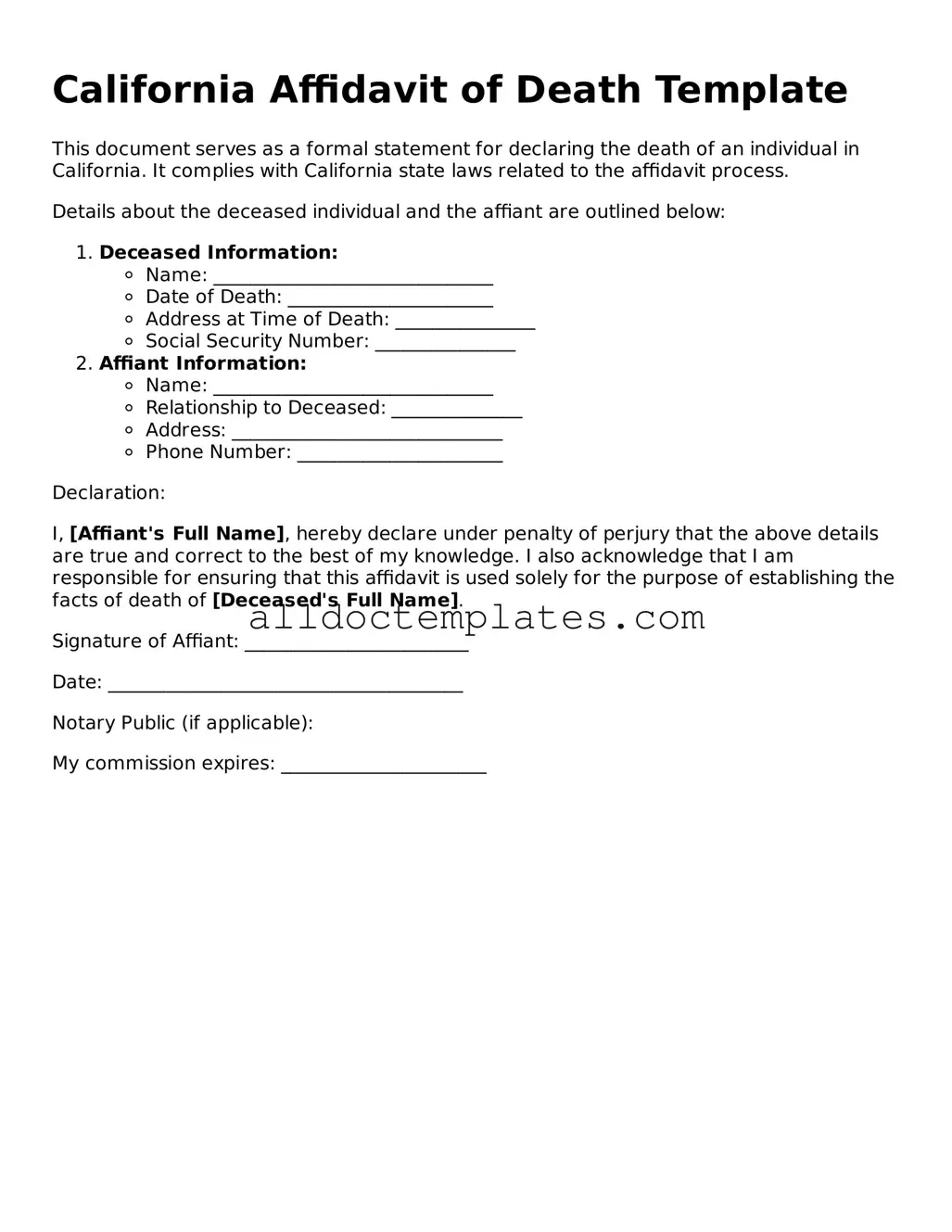California Affidavit of Death Template
This document serves as a formal statement for declaring the death of an individual in California. It complies with California state laws related to the affidavit process.
Details about the deceased individual and the affiant are outlined below:
- Deceased Information:
- Name: ______________________________
- Date of Death: ______________________
- Address at Time of Death: _______________
- Social Security Number: _______________
- Affiant Information:
- Name: ______________________________
- Relationship to Deceased: ______________
- Address: _____________________________
- Phone Number: ______________________
Declaration:
I, [Affiant's Full Name], hereby declare under penalty of perjury that the above details are true and correct to the best of my knowledge. I also acknowledge that I am responsible for ensuring that this affidavit is used solely for the purpose of establishing the facts of death of [Deceased's Full Name].
Signature of Affiant: ________________________
Date: ______________________________________
Notary Public (if applicable):
My commission expires: ______________________
